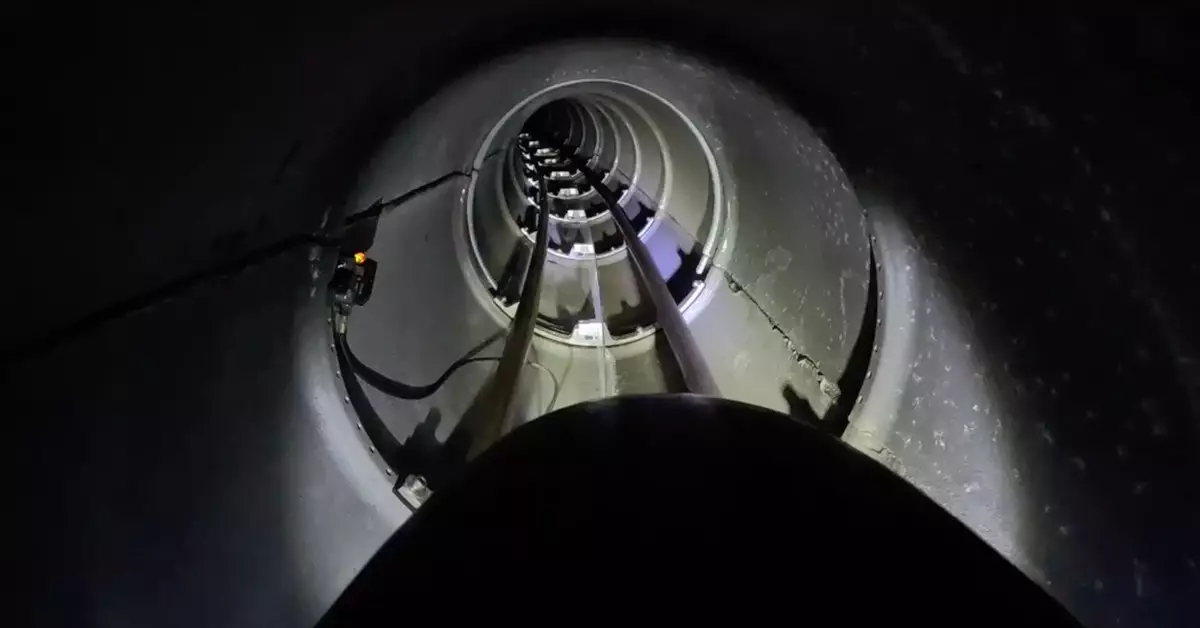The concept of the hyperloop was once viewed as a visionary breakthrough in transportation, promising speeds that could redefine how we commute. Over the years, however, this ambitious project has faced considerable challenges, leading many to prematurely declare it dead in the water. Yet, new developments from Switzerland suggest that the hyperloop may still possess a glimmer of hope, though significant hurdles remain. In this article, we will delve into the recent progress demonstrated by Swiss researchers and examine the broader implications for the future of hyperloop technology.
At the forefront of recent hyperloop developments is a 1/12th scale model being tested in Lausanne, Switzerland. This project, officially named “LIMITLESS,” aims to explore foundational technologies essential for the hyperloop, including propulsion systems, thermal management, and energy consumption. The most recent test witnessed the model traveling a distance of 11.8 kilometers at a speed of 40.7 kilometers per hour. While these figures might sound impressive for a prototype, they starkly contrast with the ambitious 700 mph speeds envisioned in Elon Musk’s original vision.
The scale model operates on a 120-meter circular test track, which, despite its small size, serves as a critical proving ground for assessing vital subsystems. Swisspod Technologies, under the guidance of the Federal Institute of Technology Lausanne, has taken a cautious yet ultimate step in validating these technologies. However, equating a small-scale test with potential full-scale transport remains contentious, as it oversimplifies the complexities involved in real-world application.
Despite excitement surrounding these advancements, the hyperloop landscape is littered with failures. Many startups targeting hyperloop development have folded due to financial mismanagement and insurmountable regulatory challenges. The skeptics argue that while the physics of the hyperloop may be plausible, the financial model supporting such an initiative is intensely flawed. Cost estimates for a full-scale hyperloop system have been labeled as extravagant, raising serious questions about the viability of funding such ambitious projects in a world where the public often prioritizes sustainable investments more critically.
Moreover, regulatory hurdles are also substantial, with local and national governments often apprehensive regarding the construction of new transit systems within populated regions. Previous attempts by Musk’s Boring Company, which focused more on tunneling than on hyperloop systems, further exemplify the difficulties faced when attempting to materialize grand visions into pragmatic executions.
The Vision Versus Reality: A Cynical Outlook
Despite the glimmer of progress in Switzerland, it’s essential to approach the hyperloop dream with a healthy dose of skepticism. Critics maintain that it remains a “vaporware” concept, more of a utopian ideal than a tangible project poised for implementation. The lifestyle that Musk envisioned—restructured around ultra-high-speed travel—contrasts sharply with the present landscape of the transportation sector, which remains entrenched in more traditional means of travel.
Musk’s own engagements have shifted focus, with his recent endeavors leaning more towards political campaigning than towards advancing the hyperloop vision. The apparent neglect of hyperloop initiatives raises fundamental concerns regarding the genuine commitment of its proponents to bring the concept to fruition.
The future remains uncertain, and while the LIMITLESS project brings a flicker of hope to the hyperloop narrative, the road to realization will be bumpy and challenging. It is clear that simply testing modular models is far from constituting a feasible transportation network for passengers or cargo. The hyperloop’s success—or lack thereof—will ultimately depend on addressing financial models, regulatory frameworks, and the ability to scale technology in a manner that inspires public confidence.
While the hyperloop may not be “dead,” it is certainly in a state of limbo, balancing between theoretical dream and practical implementation. The Swiss project serves as a reminder of the potential that exists but also highlights the myriad challenges that accompany such transformative ambitions. Only time will tell if hyperloop technology will evolve from an idea into a new norm in transportation.

